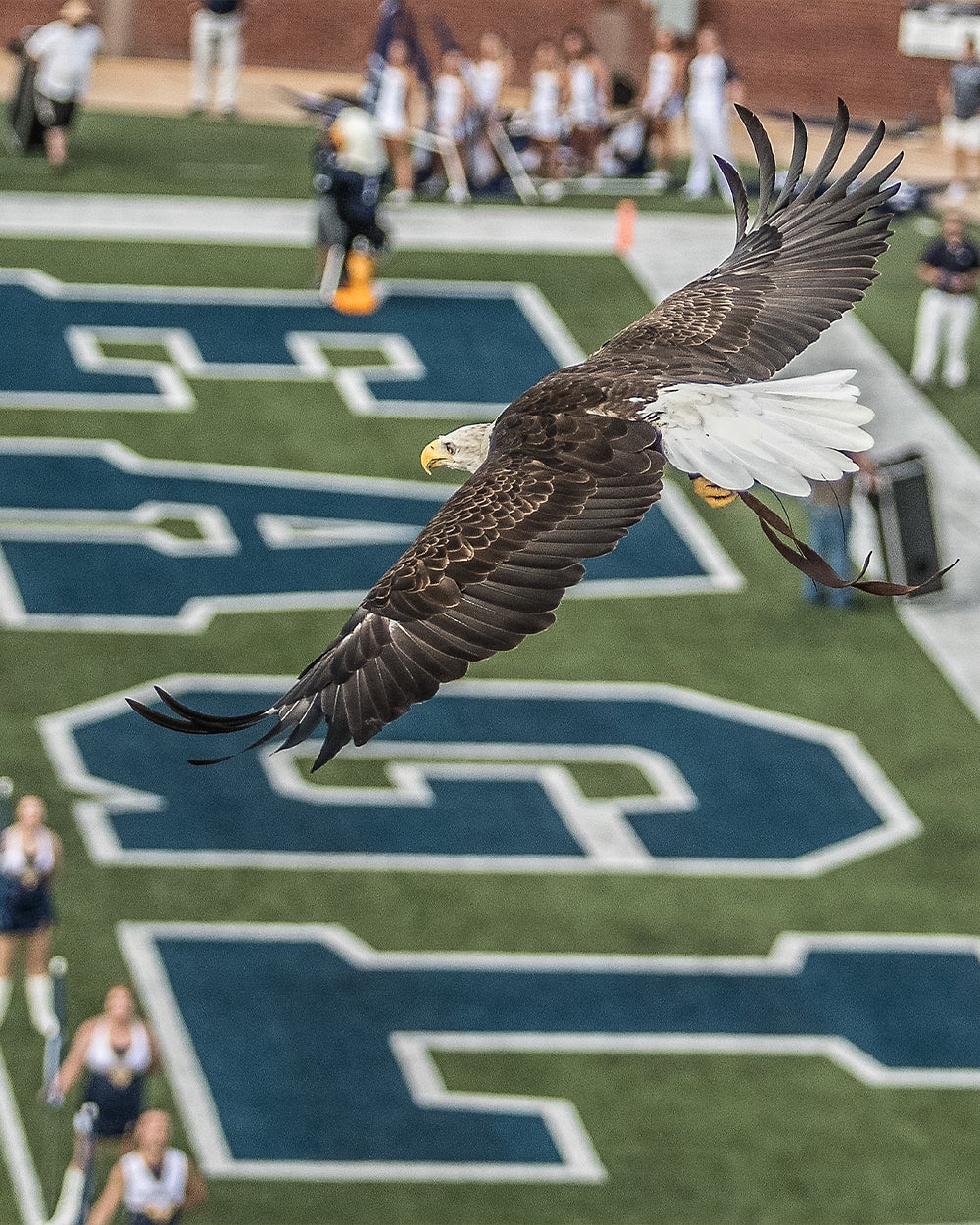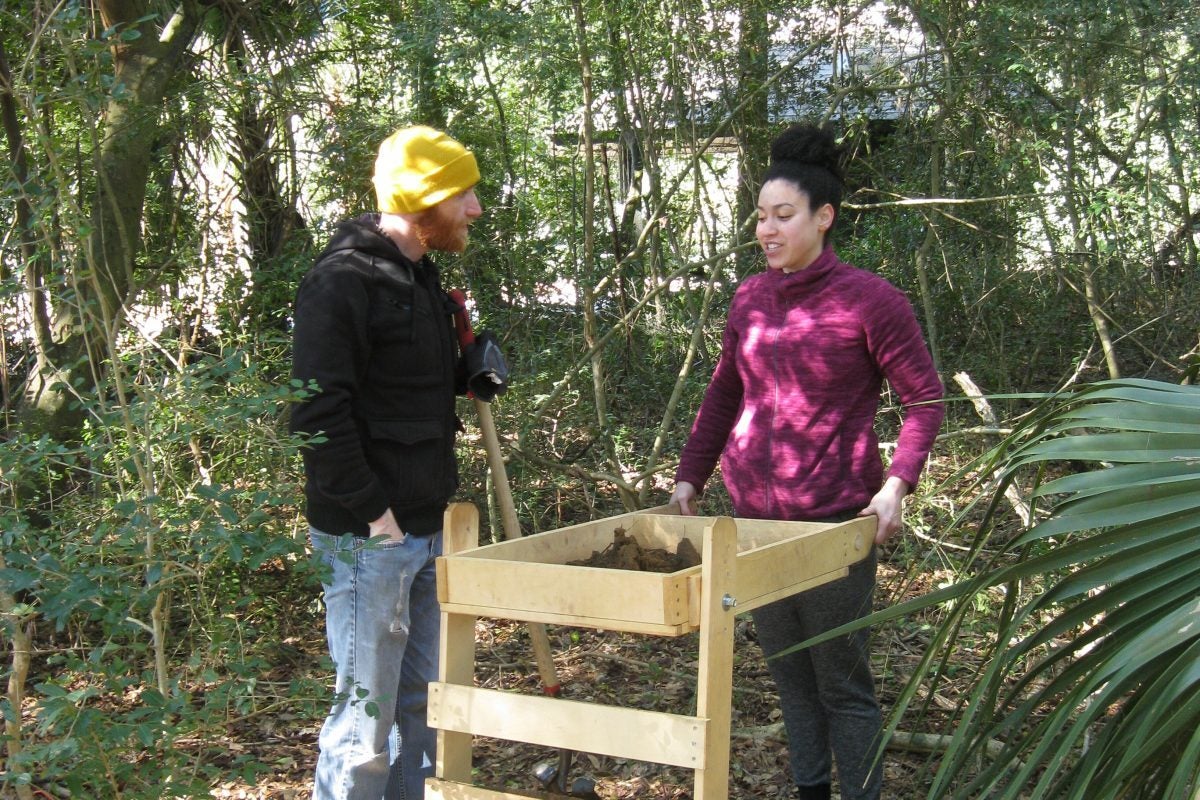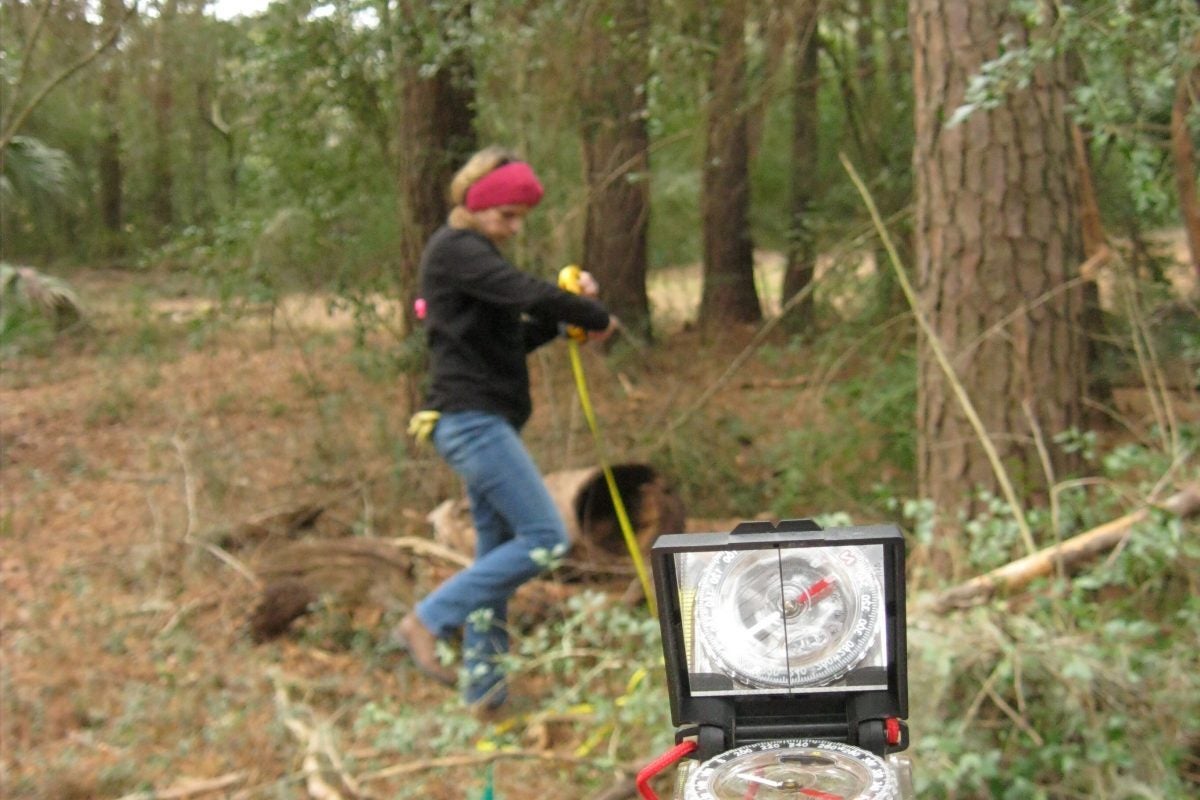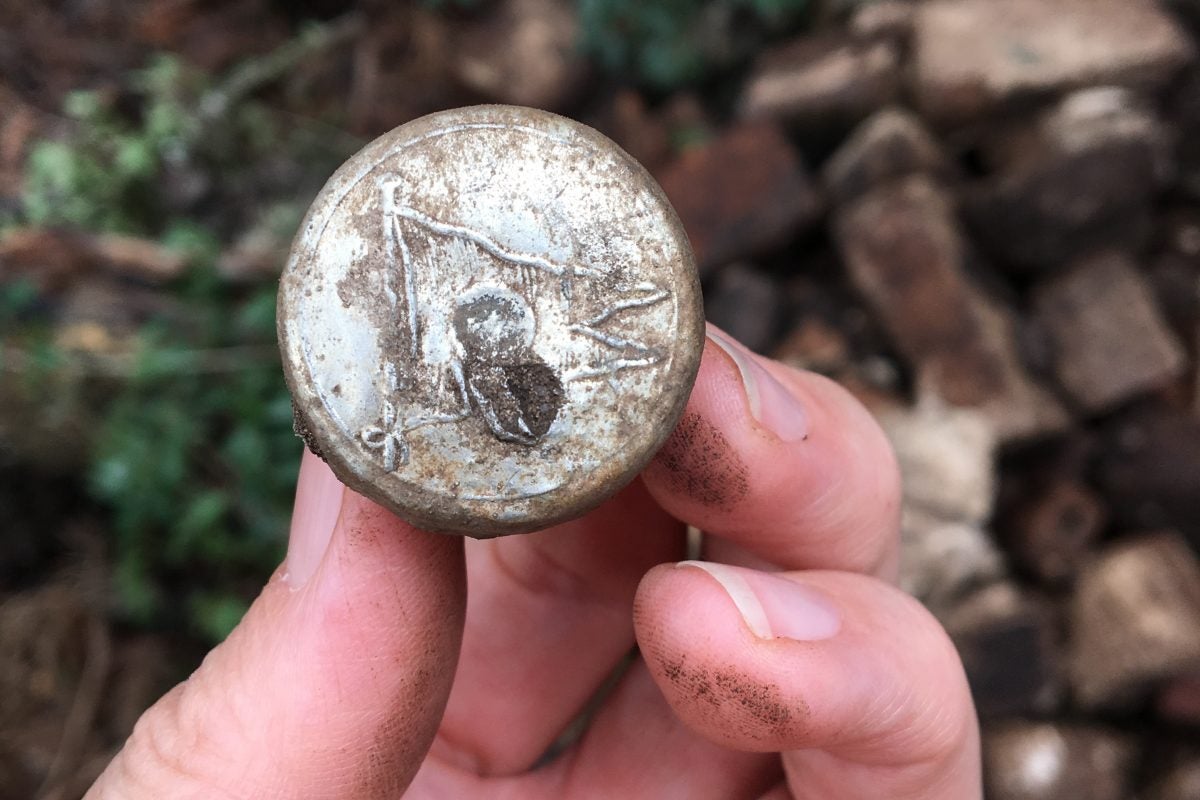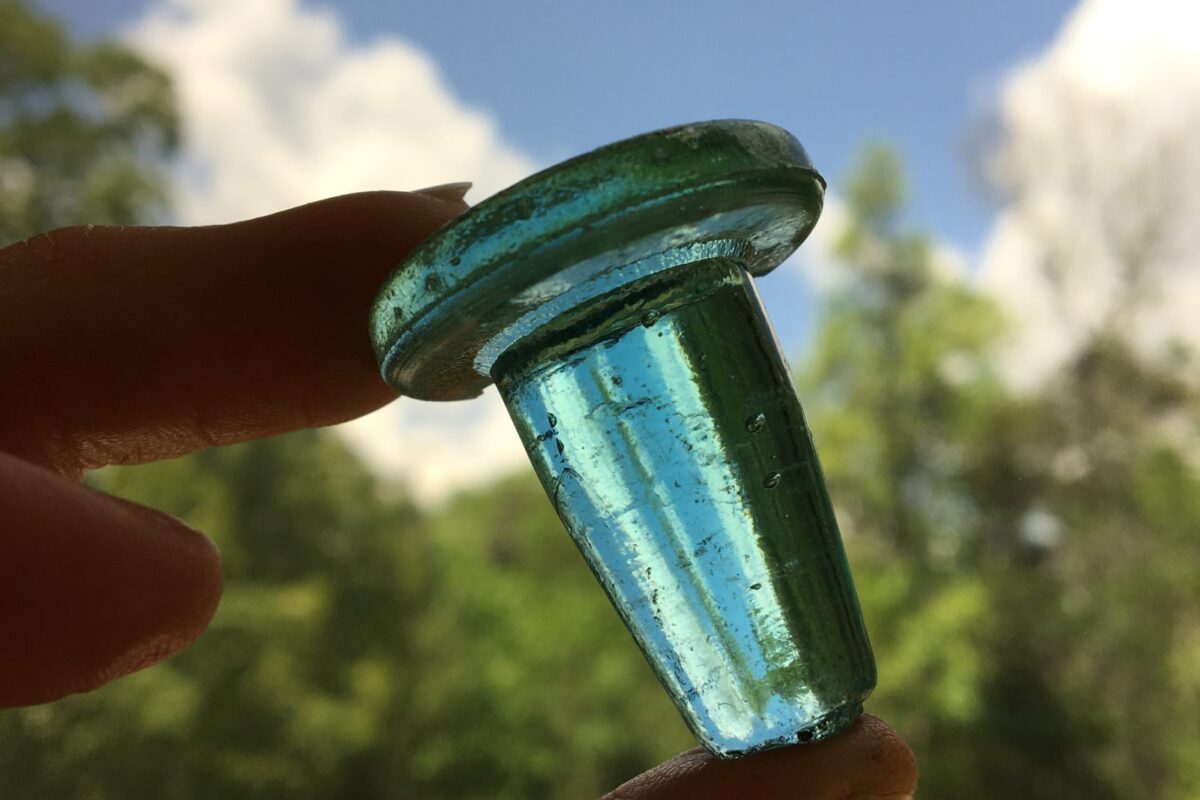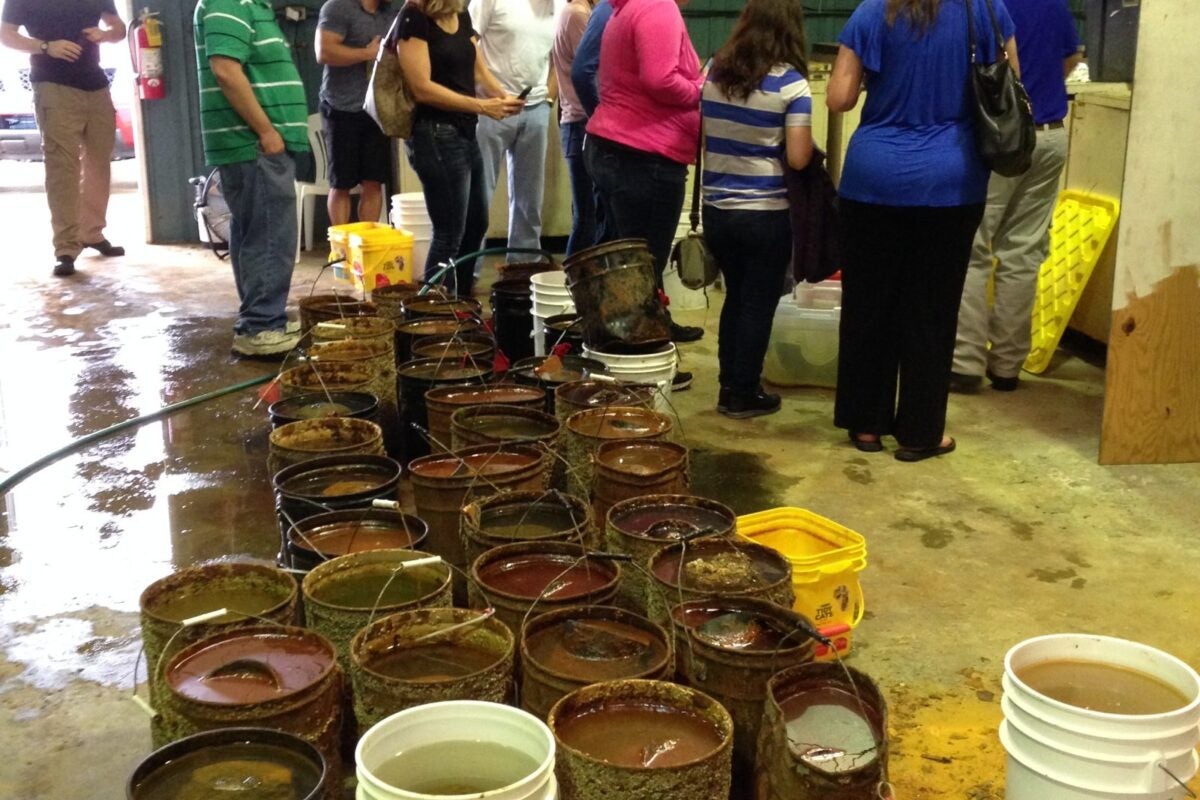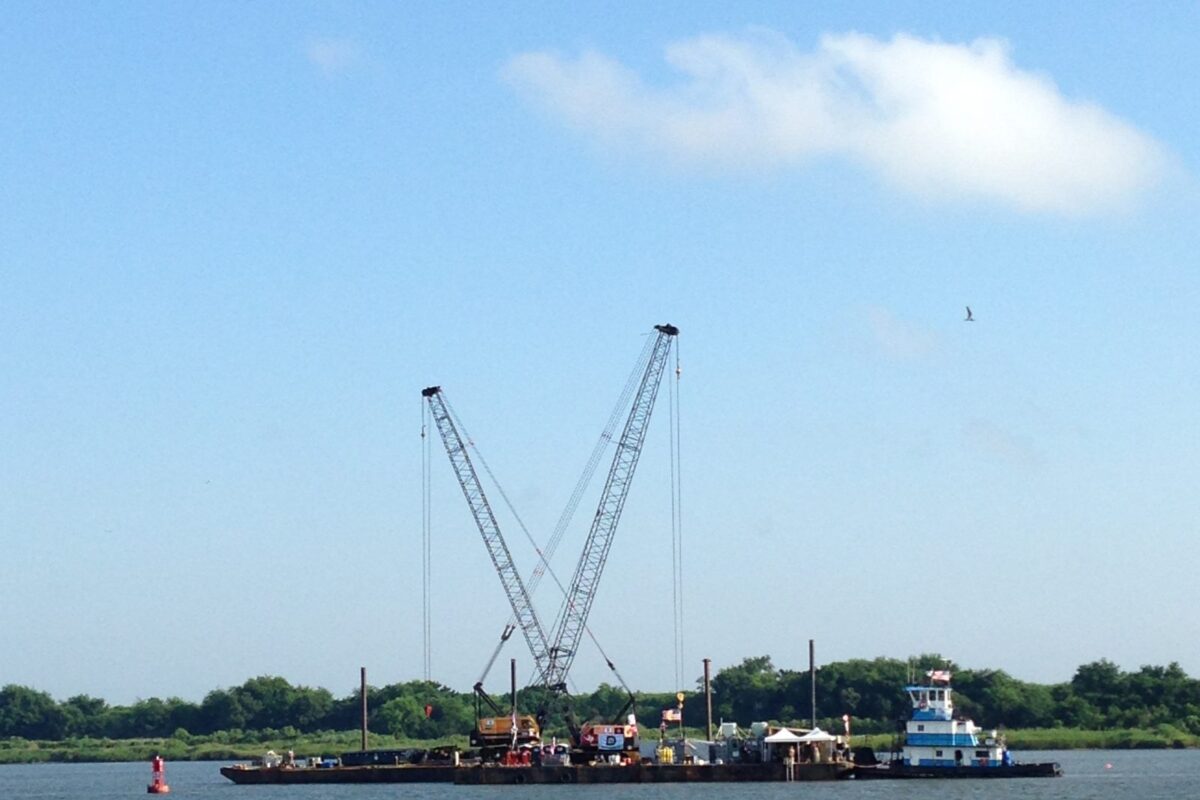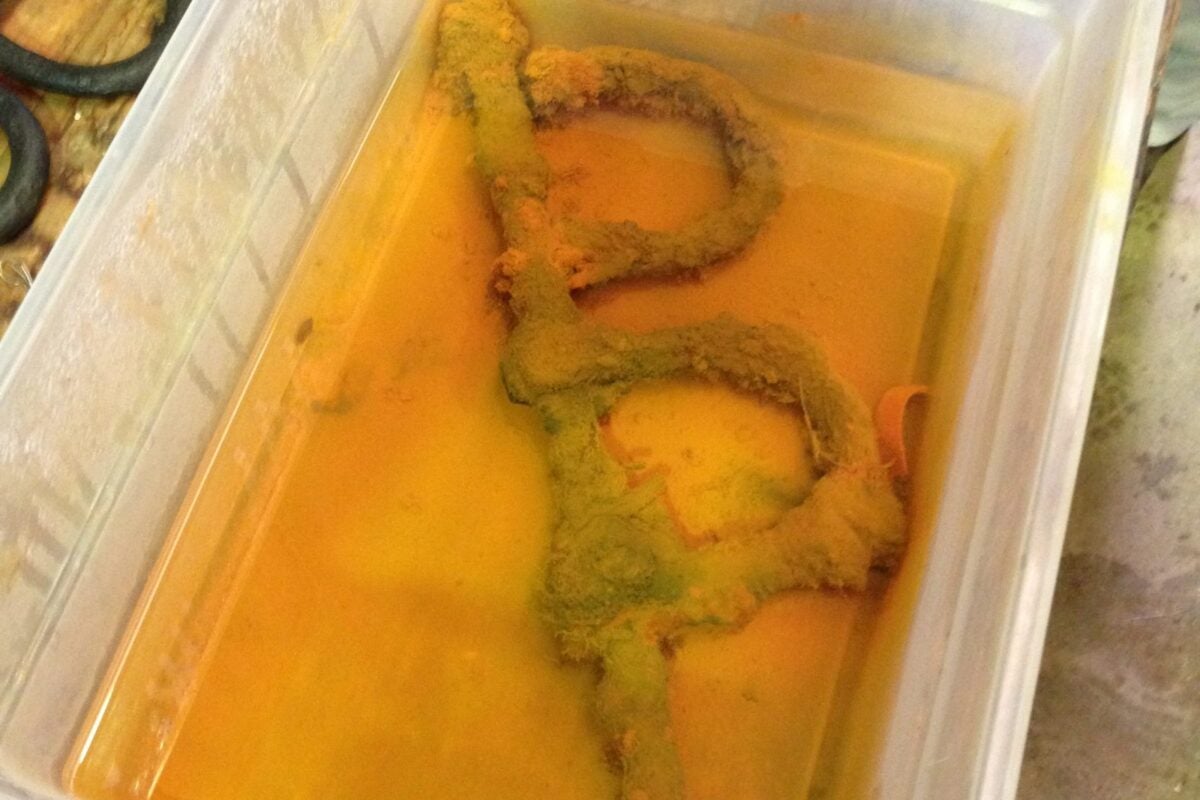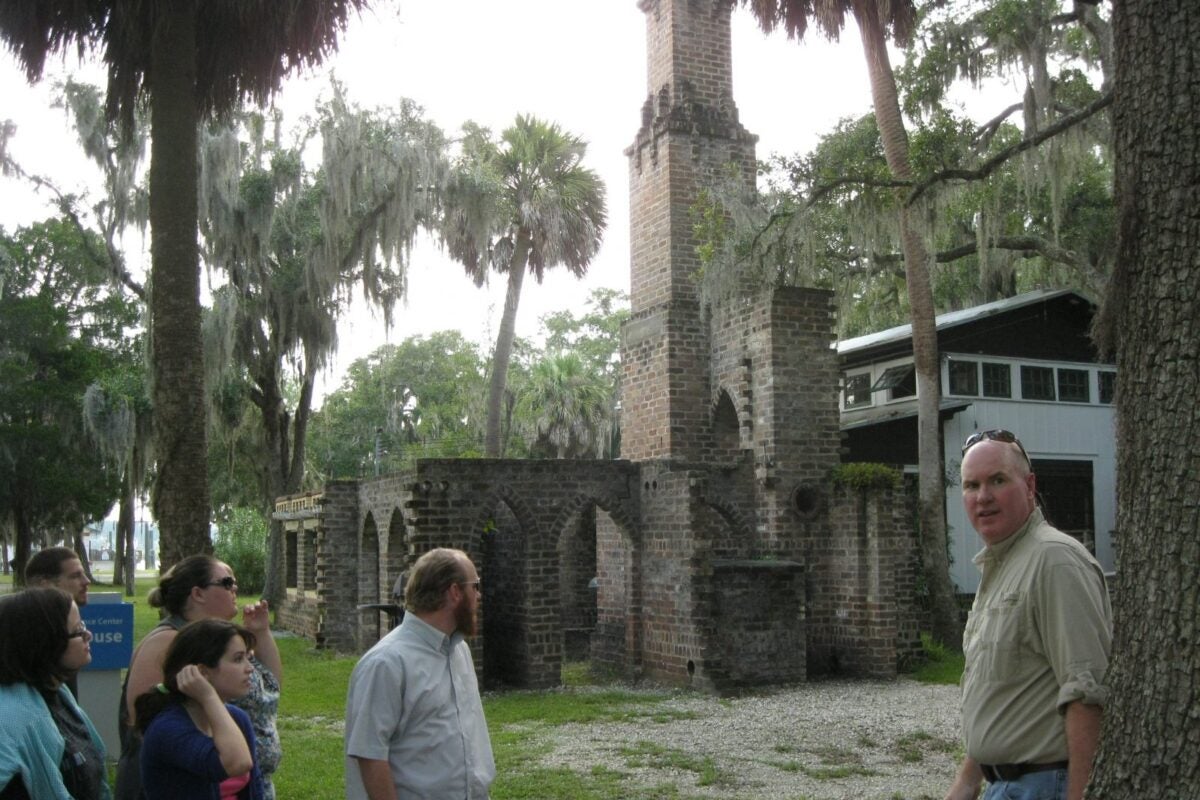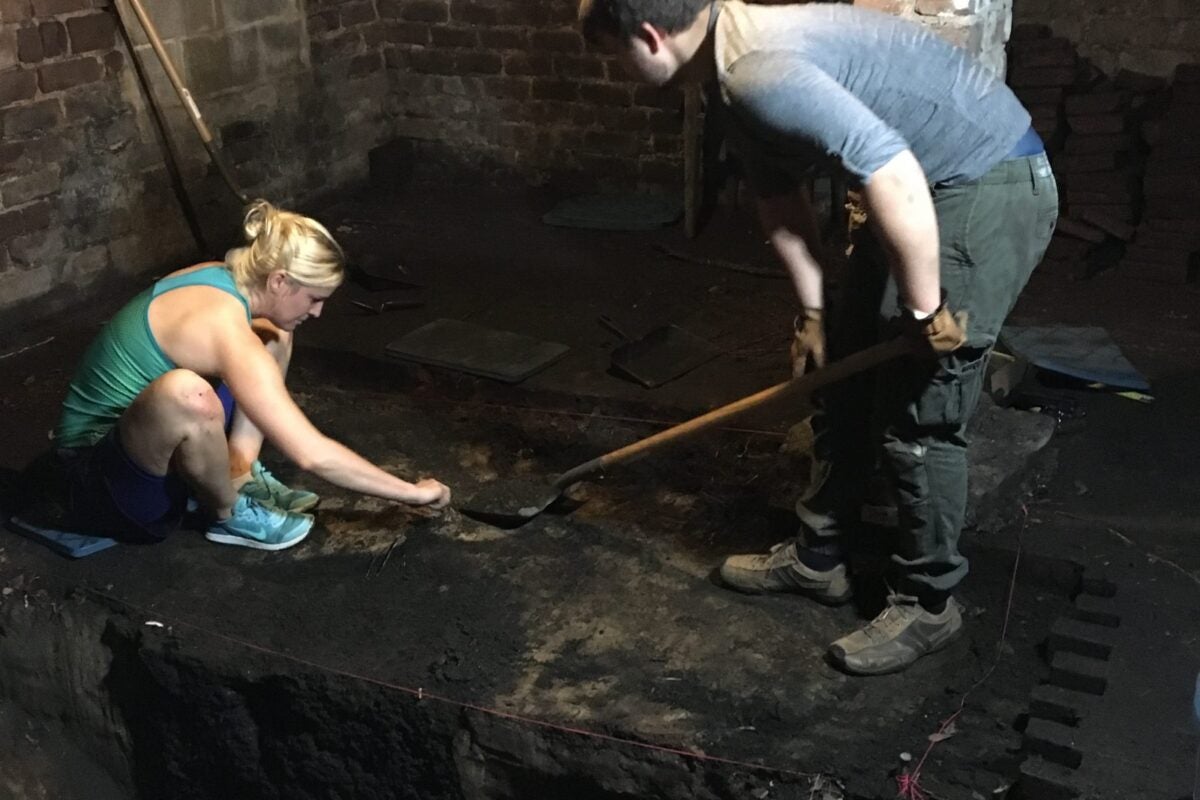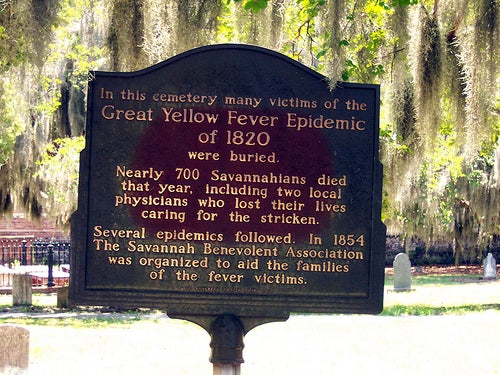Project and Artifact Gallery
Student Projects
Below is a sample of the student research projects produced by undergraduate research assistants. These projects were presented at a Georgia Southern Student Scholars Symposium (GS4).
Kaitlynn Perry’s (2022) presentation titled Sampling Colonoware Variation in an Urban Slavery Context, for the Student Research Symposium, Georgia Southern University, Armstrong Campus
Kaitlynn Perry’s (2021) research poster titled Colonoware and the Archaeology of Urban Slavery, for the Student Research Symposium, Georgia Southern University, Armstrong Campus
Raymond Phipps’ (2019) research poster titled A Glimpse into the Lives of Urban Enslaved Persons in Antebellum Savannah, for the Student Research Symposium, Georgia Southern University, Armstrong Campus
See More Student Project in the GS4 Archives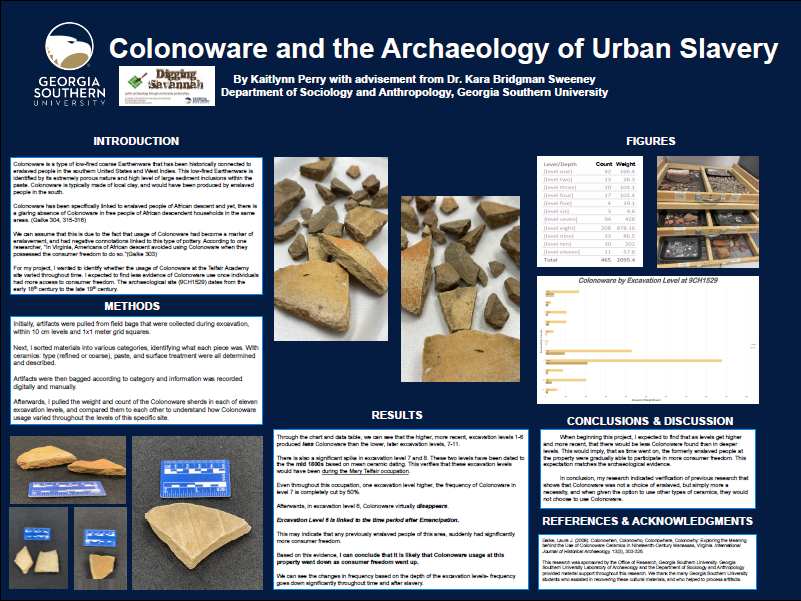
Fall 2016: Field Methods in Public Archaeology Class
Below are samples of student projects produced in Armstrong’s archaeology classes.
